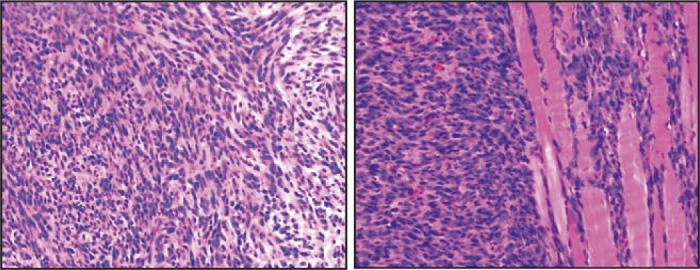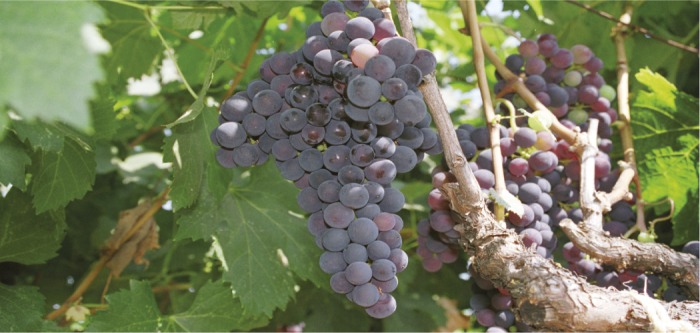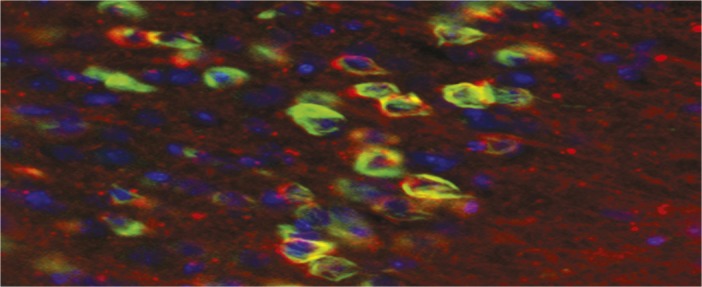Emotional signs of approaching depression
Complex systems approaching a tipping point typically experience a period called “critical slowing down,” in which the system’s resilience and recovery from perturbations slow prior to a change in state. To assess whether such critical slowdown precedes a shift between healthy and depressed emotional states, Ingrid van de Leemput et al. (pp. 87–92) analyzed studies in which volunteers recorded their emotions at random times over 5 or 6 days. The authors focused on reports provided by 535 emotionally healthy and 93 depressed volunteers that monitored four emotions: cheerful, content, sad, and anxious. For volunteers who experienced a change of emotional health after the study, whether into or out of depression, the authors report that previous positive or negative emotions better predicted future similar emotions than for volunteers whose emotional health did not change. Negative emotions appeared to be reinforced in persons progressing toward depression; likewise, positive emotions appeared to be reinforced in persons progressing out of depression. Emotional variance during the study was also high for volunteers approaching a change. The authors suggest that the trends in emotional correlation and variance are indicative of an increase in emotional inertia and critical slowdown leading to a tipping point. Such signs may serve as an early-warning system for the onset of depression, according to the authors. — P.G.
Cultural evolution in humans, chimpanzees, and orangutans

Adult male orangutan at Tuanan Research Station in Central Kalimantan. Image courtesy of Wendy Erb (Rutgers University, New Brunswick, NJ).
The evolution of culture is well documented in the human fossil record, but similar data are lacking for nonhuman primates. Jason Kamilar and Quentin Atkinson (pp. 111–115) searched for evidence of sequential cultural evolution in humans and great apes in the form of cultural nestedness, or the tendency of cultural groups with a small repertoire of traits to comprise a subset of traits of more complex cultures. The authors applied statistical tools to examine the degree of nestedness in four data sets documenting the presence or absence of specific cultural traits across indigenous human populations in North America and New Guinea, and compared the human data with patterns observed for putative cultural traits in chimpanzee and orangutan populations. The authors found that cultural diversity was highly nonrandom and showed a significant degree of nestedness in humans and chimpanzees, but not in orangutans. The findings are consistent with a sequentialadoption of cultural traits across time and space in humans and chimpanzees, and the authors suggest that traits required for such sequential cultural evolution may have first appeared in the last common ancestor of humans and chimpanzees. In addition, the study might have implications for maintaining cultural diversity in populations that have undergone fragmentation or collapse, according to the authors. — S.R.
Engineering synthetic proteins with a single-step screen

Tumors formed by a viral oncogene and an artificial oncogene product lacking any naturally occurring amino acid sequences.
Proteins evolve through an iterative process of mutation and natural selection, but the diversity of proteins that can be obtained in this manner is constrained by the starting material and dependent on the stepwise selection of intermediates. To obtain proteins with a desired function that were not derived from preexisting sequences, Kelly Chacón et al. (pp. E6–E14) devised a single-step screen for oncogenic activity in a synthetic protein. The authors used a degenerate oligonucleotide to synthesize DNA encoding randomized chains of amino acids and cloned the DNA into a retroviral expression library, generating several hundred thousand 29-amino-acid transmembrane proteins, termed traptamers. Mouse cells infected with the library produced a small number of transformed foci. The authors recovered four traptamers capable of causing transformation, none of which were homologous to any known protein. Cells expressing these traptamers formed tumors in live mice, and three traptamers were capable of transforming human fibroblasts. All four traptamers associated with the platelet-derived growth factor β receptor and induced transformation via ligand-independent activation of the receptor. This method of protein engineering, termed de novo selection, can be applied in the absence of detailed structure-function information or sophisticated modeling and may prove useful for modulating a diverse array of biological pathways, according to the authors. — C.B.
Reproductive policing in banded mongooses

A huddle of banded mongooses in Queen Elizabeth National Park, Uganda. Image courtesy of Andy Young (University of Exeter, United Kingdom).
To ensure group fitness, some species of social animals police selfish reproduction by individuals. But unlike human societies, which use threats to prevent selfish acts, policing among social insects, for example, often follows the acts; some insect queens and workers systematically destroy workers’ eggs to keep the number of reproductively active group members low. Michael Cant et al. (pp. 326–330) tested whether a cooperative mammal such as the banded mongoose (Mungos mungo) uses implicit threats to prevent selfish reproduction. Through a 7-year field experiment using contraceptive injections, the authors disrupted the natural birth synchrony of 11 groups of wild banded mongooses in Uganda’s Queen Elizabeth National Park; each group consisted of 1–8 young, subordinate adult females and 1–5 older, dominant adult females, which tend to evict the young females when the number of breeding females in the group breaches a threshold. Because females synchronize birth to the same day, the authors suppressed pregnancy in all subordinate females, all dominant females, or all but one dominant female within each group, and tracked reproductive success and the likelihood of litter survival in the first week of birth. The authors report that dominant females tend to kill communal litters that do not contain their own progeny, and the survival patterns suggest that subordinates might synchronize birth with the dominant females primarily to prevent infanticide by masking maternity in communal litters rather than to avoid eviction. According to the authors, the findings buttress the claim that policing plays a crucial role in the evolution of cooperation among vertebrates. — P.N.
Geographical region and climate predict wine grape microbial populations

Manipulating microbes on wine grapes might help vintners improve wine quality.
Although wine grapes harbor a wide range of microbes, many of which are known to affect grapevine health and wine quality, regional wine characteristics, often described as terroir, are frequently attributed to viticulture and geological factors. Nicholas Bokulich et al. (pp. E139–E148) used a high-throughput sequencing approach to examine whether the microbial communities on grapes are associated with region, climate, and grape variety. The authors analyzed 273 grape must samples from vineyards across California during two growing seasons, and found that the fungal and bacterial communities present on the wine-grape surfaces varied in a predictable way by region, climate, and the variety of grape being studied. The findings suggest a link between vineyard environmental conditions and microbial patterns, potentially explaining regional differences in wine sensory properties, the authors suggest. In addition, the study findings could lead vintners to develop tailored strategies for grapevine and wine-fermentation management that could improve grape and wine quality. According to the authors, the findings might help better understand food and agricultural systems where microbial communities play an active role in product quality. — B.A.
Functional properties of neurofibrillary tangle-bearing neurons

Mouse visual cortex showing neurofibrillary tangles (green), human mutant tau (red), and nuclei (blue).
Neurons containing neurofibrillary tangles (NFTs), characterized by the abnormal accumulation of mislocalized and aggregated tau protein, are one of the hallmarks of Alzheimer’s disease and have long been thought to cause neuronal dysfunction and death, an assumption that underlies many therapeutic strategies to prevent NFT formation or disrupt existing NFTs. Kishore Kuchibhotla et al. (pp. 510–514) used two-photon calcium imaging to investigate whether NFTs contribute to single-neuron or neuronal network dysfunction in awake mice that overexpress a mutant form of human tau protein, develop NFTs throughout the cortex of the brain, and exhibit behavioral deficits by approximately 7–8 months of age. The authors report that, unexpectedly, the neuronal network in the visual cortex of 8–10-month-old mice with NFTs was comparable to that of control animals that did not overexpress mutant tau, and appeared to be functionally intact. The NFT-bearing neurons, the authors found, were capable of integrating sensory inputs, responded robustly to visual stimuli, and displayed normal resting levels of calcium. Furthermore, within a transgenic mouse, individual tangle-bearing neurons were functionally indistinguishable from neighboring neurons that lacked NFTs, the authors report. The findings indicate that tangle-bearing neurons remain functionally integrated in cortical circuits and suggest that NFT deposition may not disrupt network function, according to the authors. — N.Z.


